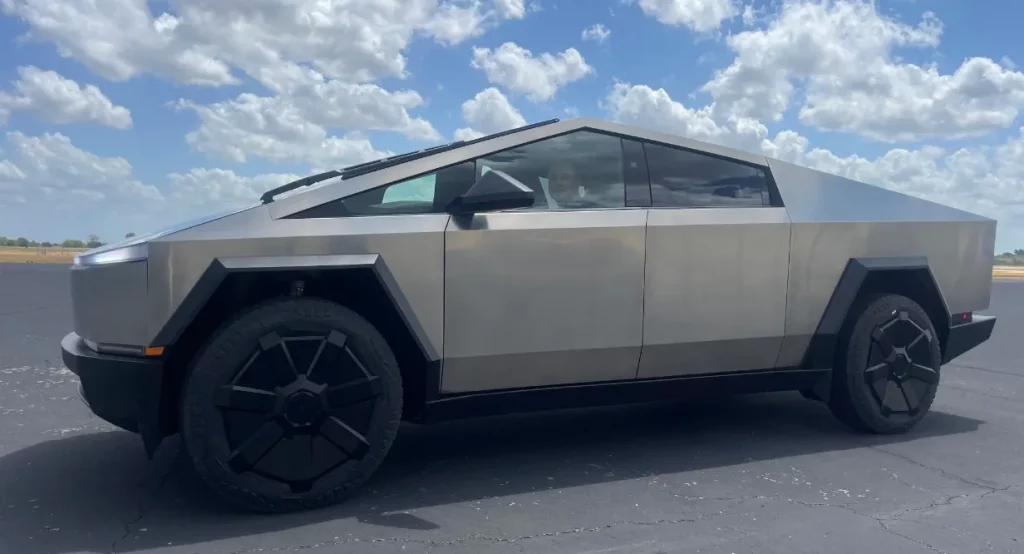Tesla has often been under scrutiny for its range estimates, especially for its new launches. The latest model to join this controversy is the Tesla Cybertruck. We previously covered that the charging curve for the car didn’t show too much promise. Well, a recent test by InsideEVs now revealed that the Cybertruck’s performance falls noticeably short of Tesla’s advertised range.
That is 20% lower than the advertised range in ideal conditions
The test, conducted by Kyle Conner from Out of Spec Motoring, was straightforward: drive the Cybertruck until it could no longer move. The conditions were typical – a 45 degrees Fahrenheit night in Texas, maintaining a speed of 70 mph. The vehicle used was a dual-motor Cybertruck fitted with 20-inch wheels and 35-inch all-terrain tires.

Tesla claims that this model can cover 320 miles on a full charge. However, Conner’s test concluded after just 254 miles – a significant 20.6% less than the advertised range. This result is intriguing, especially when compared to competitors like Rivian, whose R1T model fell short by only 7.4% in a similar test.
One might argue that the Cybertruck’s performance is still commendable, considering the challenging test conditions. Yet, it raises questions about the accuracy of EV range estimates provided by manufacturers, including Tesla. This discrepancy is not just about numbers; it has real-world implications, particularly for those considering an EV for long-distance travel or heavy-duty tasks.
The test also hints at the impact of external factors on EV performance. While the Cybertruck was tested in relatively mild conditions with minimal load, one can’t help but wonder how it would fare in colder temperatures or with a heavier load. Additionally, most EV users tend to keep their battery charge between 20% and 90% to prolong battery life, which further complicates the real-world applicability of the advertised range.
Tesla’s option to switch to all-season tires, which allegedly increases the estimated range to 340 miles, might offer some relief. However, it remains to be seen whether this change alone can bridge the gap between expectation and reality. This test in itself serves as a reminder that while EVs are a leap forward in automotive technology, their real-world performance still requires careful consideration by potential buyers.
RELATED:
- Tesla achieves record deliveries in 2023, surpassing targets despite challenges
- EV Titans clash: Li Auto, Nio, Xpeng, and Tesla spark intense rivalry in China’s Electric Vehicle market
- Xiaomi Band 8 Genshin Impact custom edion get a huge discount.
- Best Smartphones Awards 2023 – Gizmochina
(Via)







